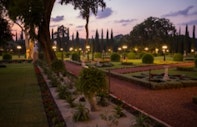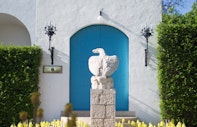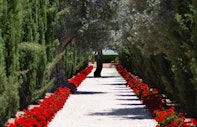What Bahá’ís Believe
Bahá’u’lláh and His Covenant
Bahá’u’lláh – The Divine Educator
The Shrine of Bahá’u’lláh
- What Bahá’ís Believe
- Overview
- Bahá’u’lláh and His Covenant
- The Life of the Spirit
- God and His Creation
- Essential Relationships
- Universal Peace
- What Bahá’ís Do
At the hour of dawn on 29 May 1892, in the 75th year of His life, Bahá’u’lláh passed away, His spirit at long last released from a life filled with tribulations. The news of His passing was conveyed to the Ottoman Sultan who was advised of the intention of interring Bahá’u’lláh’s remains within the precincts of the Mansion of Bahjí, where He spent the last 13 years of His life. He was interred shortly after sunset on the same day.
The Shrine of Bahá’u’lláh became the point of devotion on earth for Bahá’ís, the spot towards which they turn each day in prayer.
Today, the Shrine consists of a light-filled, central room, striking in its simplicity and beauty. A garden stands in the middle of the room, which is surrounded by smaller rooms. In one corner of the central room is the chamber where Bahá’u’lláh’s remains are laid to rest.
Entrance to the Shrine of Bahá’u’lláh
Throughout his ministry as Guardian of the Bahá’í Faith, Shoghi Effendi—the great-grandson of Bahá’u’lláh—conceived and created beautiful surrounding gardens as a befitting setting for this most sacred spot. With the Shrine and Mansion at its centre, Shoghi Effendi’s vision took the form of an expansive circle, each quadrant of which became a garden of different composition and design. He built the five gates and nine pathways of this garden, surfacing the paths with small white pebbles from a beach on the Sea of Galilee, and crushed roof tiles. After the passing of Shoghi Effendi, his great plan for the beautification of the environs of the Shrine of Bahá’u’lláh continued.
To set foot in the heart of the site is to enter a place of peace and serenity, a wall-less sanctuary that is protected without being enclosed. Here the formal, precise gardening flows around the historic buildings and natural elements that include a centuries-old sycamore fig tree and the remains of an ancient olive grove.







